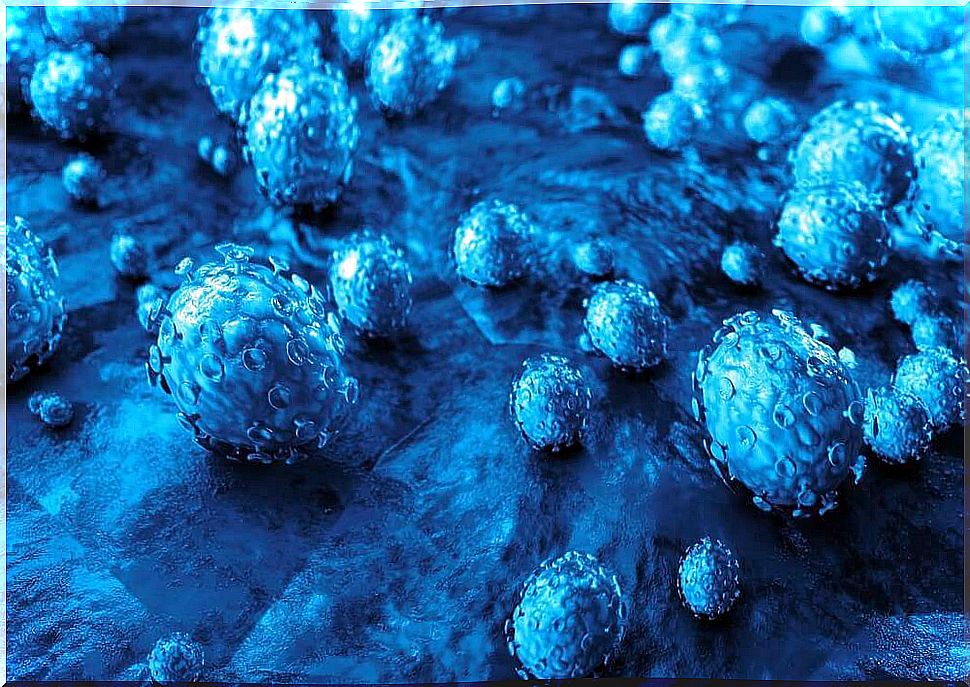Cervical Cancer: Origin And Prevention
According to the World Health Organization (WHO), cervical cancer is the second most common type of cancer in women. It is related to an infection caused by the human papillomavirus (HPV).
Although there are different types of cervical cancers, most of them are related to an infection of sexual origin. However, it is possible to prevent it in its earliest stages. But, for this, you must undergo periodic check-ups with the gynecologist.
Another aspect that you should keep in mind is that the human papillomavirus can occur at the beginning without too many symptoms. However, if left untreated, it could lead to cancer.
Since it is one of the most serious diseases related to women’s health, we invite you to take note of the following that we are going to comment on.
What is cervical cancer?
Like all cancer, this disease has its trigger in a series of cells that begin to grow excessively in the tissue that lines the cervix.
- It should be remembered that the cervix connects the body of the uterus with the vagina. It usually changes as it grows and, of course, when it gives birth, at which point it dilates to let the baby pass.
- The process by which healthy cells in the cervix become cancerous is slow. They first become precancerous. Later, they can become potentially cancerous.
- All of this can be detected under a microscope. It is done through a simple test through a ‘scraping’ of the tissue from the cervix.
- As a matter of interest, it should be said that the most common type of cervical cancer is squamous cell carcinoma.
- It should also be noted that, on occasion, these precancerous cells may not develop into cancerous cells and may be dormant without developing cancer. But, if it does, it is a very invasive disease.
Causes of cervical cancer
As we pointed out at the beginning, it is a very virulent type of cancer that affects thousands of women around the world. Therefore, it is advisable to know its main causes:
- The human papillomavirus (HPV or HPV) is the most common source of this disease.
- It is not really just one virus, but there are 150 types. Some of them cause the uncontrolled growth of cells as a result of papillomas (warts).
- This virus can cause those who suffer from it to develop the classic papillomas on the lips or feet. This may occur due to simple contact with the skin. However, the most common is to get it due to sexual contact.
In the latter case, both male and female genitalia can develop low-risk or high-risk HPV (related to cancer).
Risk factors for cervical cancer

HPV infection is common. In most cases it is possible to overcome it thanks to the immune system and with the appropriate treatment. But sometimes the disease becomes chronic and can lead to cancer.
Why in some cases yes and in others no? In addition to the original causes of this disease, there are several risk factors. They are elements that, sometimes, when combined with each other, will make these precancerous cells or not develop into cancer cells.
In other words, they increase the chances that the human papillomavirus will lead to cancer. Therefore, it is convenient to pay attention to them:
- If a woman smokes and has also contracted HPV, she has a greater chance that the precancerous cells of the cervix will eventually become cancerous.
- Other possible triggers are the diversity of sexual partners, early deliveries and multiparity (we refer to those women who have had 5 or more deliveries).
Keys to preventing cervical cancer

Get the vaccine to prevent human papillomavirus
Many professionals recommend preventing cervical cancer with the three existing vaccines for it.
- They are the bivalent vaccine ( Cervarix ), the quadrivalent vaccine ( Gardasil ) and the nonavalent vaccine.
- These protect against different types of infections and cancers of the vagina and cervix.
- Its administration is recommended during adolescence, between 9 and 14 years old. However, it can be received up to 26 years of age. Between 26 and 45 it is possible in some cases, but a specialist should always be consulted.
It must be said that the vaccine does not protect against the entire variety of viruses associated with HPV.
Perform regular papilloma tests
As we have indicated before, this type of cancer can be diagnosed in its previous stages. For this, it is necessary to have annual check-ups with the gynecologist.
- It is just about collecting a sample of cells from the cervix and cervical canal. They will be studied in the laboratory.
Maintain a healthy and safe sexuality
Factors such as having many sexual partners or not using certain protection systems, such as the condom, can put you at greater risk when it comes to contracting the papilloma virus or any other disease of sexual origin.
Therefore, maintain a healthy sex life (along with other good lifestyle habits) so that you can prevent various health problems and enjoy the best possible quality of life.
Avoid smoking

By itself, tobacco is not the cause of the development of cervical cancer. However, as we have seen, it can be a trigger.
If you are a smoker, it is possible that your defenses are no longer as effective when it comes to coping with an HPV infection. Over time, these precancerous cells will become invasive. For this reason, among many other reasons, it is highly advisable that you stop smoking.
Change your habits now to feel better and prevent
As you can see, if you want to avoid the appearance of cervical cancer, what you should do is change certain habits right now. It may seem complicated in some cases, such as tobacco, but it is possible, and your overall health will thank you for it.
In addition, it is convenient to establish periodic reviews with the gynecologist to prevent this type of disease, as well as many others. It is the best way to prevent their development or diagnose them as soon as possible in order to act in time.










